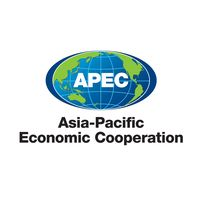Tensions and Alliances: The Shifting Dynamics in East Asia
November 18, 2024, 4:02 am

Location: China, Hong Kong, Hong Kong Island
Employees: 1001-5000
Founded date: 1835
In the heart of the Asia-Pacific, a storm brews. The South China Sea, a vast expanse of water, is more than just a geographical feature. It’s a battleground for influence, power, and national pride. Recent meetings between leaders from Japan, South Korea, and China reveal the intricate web of alliances and tensions that define this region.
Japanese Prime Minister Shigeru Ishiba recently met with Chinese President Xi Jinping at the APEC summit in Peru. Their conversation was a delicate dance. Ishiba expressed serious concerns about China's military activities in the South China Sea. This is not just a matter of territorial disputes; it’s about the balance of power in Asia. Japan, historically wary of its neighbor, is watching closely as China flexes its military muscles.
The South China Sea is a critical artery for global trade. It’s a place where shipping lanes intersect with national interests. Ishiba's concerns echo a broader anxiety shared by many nations. The peace and stability of the Taiwan Strait are paramount, not just for Japan, but for the international community. The stakes are high, and the tension palpable.
Meanwhile, South Korean President Yoon Suk Yeol is navigating his own treacherous waters. His meeting with Xi was a rare occurrence, a chance to discuss regional peace. North Korea looms large in this conversation. The North's provocations and its alliance with China complicate matters. Yoon seeks cooperation with Beijing to counteract the threats from Pyongyang. Yet, the relationship is fraught with contradictions. China is North Korea's ally, while South Korea is firmly aligned with the United States.
The backdrop of these discussions is a world increasingly defined by military posturing. North Korea's recent rhetoric and military displays have raised alarms. Yoon's call for stability is a plea for calm in a region on edge. He hopes for a cooperative spirit, but the reality is more complex. China’s silence on North Korea during the meeting with Yoon speaks volumes. It highlights the delicate balance China must maintain between its ally and its trading partner.
The APEC summit serves as a stage for these leaders to engage in high-stakes diplomacy. It’s a gathering of economies that represent a significant portion of the world’s GDP. Yet, beneath the surface, the tensions simmer. Ishiba’s meeting with Xi was not just about economic ties; it was a reminder of the military realities that overshadow their relationship. Both leaders agreed to expand cultural exchanges, but can cultural ties truly bridge the chasm of military distrust?
The dynamics between Japan and China are particularly fraught. Ishiba’s government is responding to the growing military presence of China in the region. Japan is strengthening its security ties with the United States and its allies. This shift is not just a reaction; it’s a strategic pivot. Japan is reasserting itself on the global stage, and it’s doing so with a wary eye on China.
The recent stabbing of a Japanese schoolboy in China adds another layer of complexity. It’s a tragic reminder of the human cost of diplomatic tensions. Ishiba urged Xi to ensure the safety of Japanese citizens in China. This plea underscores the fragility of the relationship. Trust is a currency that is in short supply.
As these leaders navigate their respective challenges, the question remains: can cooperation prevail over conflict? The meetings at APEC suggest a desire for dialogue, but actions speak louder than words. The joint statement from Ishiba, Biden, and Yoon opposing unilateral changes to the status quo in the Asia-Pacific waters is a clear signal. It’s a united front against coercive actions, but will it be enough?
The geopolitical landscape in East Asia is shifting. Alliances are being tested, and new partnerships are forming. The relationship between South Korea and China is particularly intriguing. Despite their differences, they are major trading partners. Yet, the specter of North Korea looms large. The complexities of this relationship are a microcosm of the broader regional dynamics.
In this game of chess, every move counts. The leaders of Japan, South Korea, and China are acutely aware of the stakes. They are balancing national interests with the need for stability. The South China Sea is not just a body of water; it’s a symbol of the power struggles that define this era.
As the world watches, the leaders must tread carefully. The path forward is fraught with challenges. Yet, amidst the tensions, there is a glimmer of hope. Dialogue is essential. Cooperation is necessary. The future of East Asia hangs in the balance, and the choices made today will shape the region for years to come.
In the end, the question is not just about territory or military might. It’s about the people who live in these nations. It’s about peace, stability, and the hope for a better tomorrow. The leaders must remember that in this intricate dance of diplomacy, the rhythm of cooperation must prevail over the discord of conflict.
Japanese Prime Minister Shigeru Ishiba recently met with Chinese President Xi Jinping at the APEC summit in Peru. Their conversation was a delicate dance. Ishiba expressed serious concerns about China's military activities in the South China Sea. This is not just a matter of territorial disputes; it’s about the balance of power in Asia. Japan, historically wary of its neighbor, is watching closely as China flexes its military muscles.
The South China Sea is a critical artery for global trade. It’s a place where shipping lanes intersect with national interests. Ishiba's concerns echo a broader anxiety shared by many nations. The peace and stability of the Taiwan Strait are paramount, not just for Japan, but for the international community. The stakes are high, and the tension palpable.
Meanwhile, South Korean President Yoon Suk Yeol is navigating his own treacherous waters. His meeting with Xi was a rare occurrence, a chance to discuss regional peace. North Korea looms large in this conversation. The North's provocations and its alliance with China complicate matters. Yoon seeks cooperation with Beijing to counteract the threats from Pyongyang. Yet, the relationship is fraught with contradictions. China is North Korea's ally, while South Korea is firmly aligned with the United States.
The backdrop of these discussions is a world increasingly defined by military posturing. North Korea's recent rhetoric and military displays have raised alarms. Yoon's call for stability is a plea for calm in a region on edge. He hopes for a cooperative spirit, but the reality is more complex. China’s silence on North Korea during the meeting with Yoon speaks volumes. It highlights the delicate balance China must maintain between its ally and its trading partner.
The APEC summit serves as a stage for these leaders to engage in high-stakes diplomacy. It’s a gathering of economies that represent a significant portion of the world’s GDP. Yet, beneath the surface, the tensions simmer. Ishiba’s meeting with Xi was not just about economic ties; it was a reminder of the military realities that overshadow their relationship. Both leaders agreed to expand cultural exchanges, but can cultural ties truly bridge the chasm of military distrust?
The dynamics between Japan and China are particularly fraught. Ishiba’s government is responding to the growing military presence of China in the region. Japan is strengthening its security ties with the United States and its allies. This shift is not just a reaction; it’s a strategic pivot. Japan is reasserting itself on the global stage, and it’s doing so with a wary eye on China.
The recent stabbing of a Japanese schoolboy in China adds another layer of complexity. It’s a tragic reminder of the human cost of diplomatic tensions. Ishiba urged Xi to ensure the safety of Japanese citizens in China. This plea underscores the fragility of the relationship. Trust is a currency that is in short supply.
As these leaders navigate their respective challenges, the question remains: can cooperation prevail over conflict? The meetings at APEC suggest a desire for dialogue, but actions speak louder than words. The joint statement from Ishiba, Biden, and Yoon opposing unilateral changes to the status quo in the Asia-Pacific waters is a clear signal. It’s a united front against coercive actions, but will it be enough?
The geopolitical landscape in East Asia is shifting. Alliances are being tested, and new partnerships are forming. The relationship between South Korea and China is particularly intriguing. Despite their differences, they are major trading partners. Yet, the specter of North Korea looms large. The complexities of this relationship are a microcosm of the broader regional dynamics.
In this game of chess, every move counts. The leaders of Japan, South Korea, and China are acutely aware of the stakes. They are balancing national interests with the need for stability. The South China Sea is not just a body of water; it’s a symbol of the power struggles that define this era.
As the world watches, the leaders must tread carefully. The path forward is fraught with challenges. Yet, amidst the tensions, there is a glimmer of hope. Dialogue is essential. Cooperation is necessary. The future of East Asia hangs in the balance, and the choices made today will shape the region for years to come.
In the end, the question is not just about territory or military might. It’s about the people who live in these nations. It’s about peace, stability, and the hope for a better tomorrow. The leaders must remember that in this intricate dance of diplomacy, the rhythm of cooperation must prevail over the discord of conflict.
